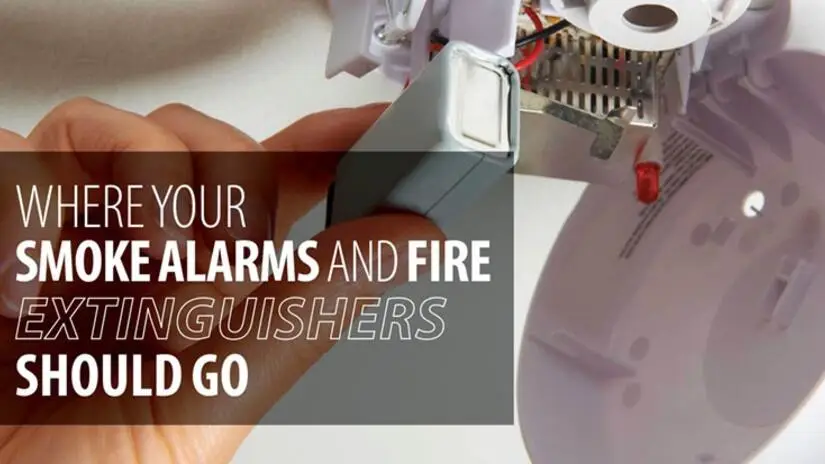
Proper placement of smoke alarms and fire extinguishers is crucial for home safety, according to Rainbow Restoration. Key recommendations include:
|
Protecting our loved ones from harm is paramount in every family home. In order to prevent fire, and the subsequent heartache and massive property damage that ensues, it is vital to know where to place your smoke alarms and fire extinguishers.
The experts at Rainbow Restoration are dedicated to helping you be fully prepared for fire and damage prevention. Prevention information is vital to heading off heart wrenching losses.
Which Fire Extinguisher Do You Install?
The three most highly recommended fire extinguishers include:
- Class A Fires: This extinguisher is for ordinary combustible materials. This includes paper, wood, cardboard, and plastics
- Class B Fires: These fires require an extinguisher designed for flammable or combustible liquids. These include gasoline, grease, kerosene and oil.
- Class C Fires: These fires require an extinguisher designed for electrical equipment. This means appliances, circuit breakers, wiring, and outlets. Never try water for extinguishing class C fires - your risk of electric shock is too high.
The wrong type of extinguisher for the wrong type of fire is life-threatening. This means you should:
Base your fire extinguisher selection on the fire classification, as this should match the extinguisher's compatibility with the items you intend to protect.
The fire prevention experts at Rainbow Restoration recommend placing one in the kitchen, one in the garage and one in the workshop and/or office. It is also a good idea to have one near bedrooms.
How Do You Know Which Smoke Detector To Get, and Where It Should Be Placed?
Smoke detection technologies include ionization smoke detection and photoelectric smoke detection.
- Ionization: this smoke detector is especially responsive to flaming fires
How it works: The Ionization smoke alarm has a little bit of radioactive material in-between two electrically-charged plates. These ionize the air while causing a current to flow in between the two plates.
Whenever smoke enters its chamber, it disrupts the flow of ions. This reduces the flow of current, activating the alarm.
- Photoelectric: this smoke detector is very responsive to a fire that begins after a long period of smoldering
How it works: Photoelectric smoke alarms work by aiming a light source into a sensing chamber. The chamber is at an angle, away from the sensor. The moment smoke enters its chamber, it reflects light onto the light sensor. This triggers the alarm.
Most fatal home fires are smoldering fires. The rest are flaming fires. It may be impossible to predict the type of fire you could have. All smoke alarm technology needs to perform acceptably for both types of fires.
Always place a smoke alarm on every floor, and in every sleeping room:
- Inspect every smoke detector once a month, and always change the batteries once a year. Your smoke detector will sense abnormal amounts of smoke - or invisible combustion gases escaping into the air.
- Every detector will detect both smoldering and burning fires. Always place at least one smoke detector on every level of your house. This way no matter what floor it is on - you can locate the nearest extinguisher more quickly.
If you ever have to suffer through the horrible event of a loss for any reason, it’s important to know that the caring professionals at Rainbow Restoration are there for you.
Professional, off-site restoration services will support your salvage efforts. Ease of mind comes with the careful service and cutting edge processes for restoration of equipment or property damaged by fire, smoke, water, mold damage, and more.
You can rest easy by choosing the help of a company who cares. If you have suffered property damage, request an appointment online or call us for fire restoration services you can trust.
Additional Reading:
Fire Escape Plans for Work and Home
Cleaning and Storing Contents: How We Handle Your Belongings
